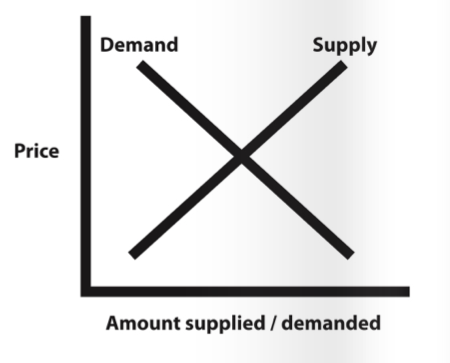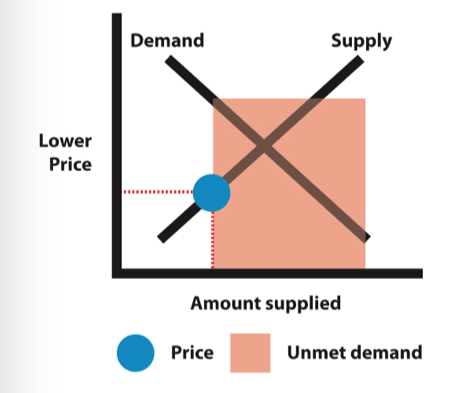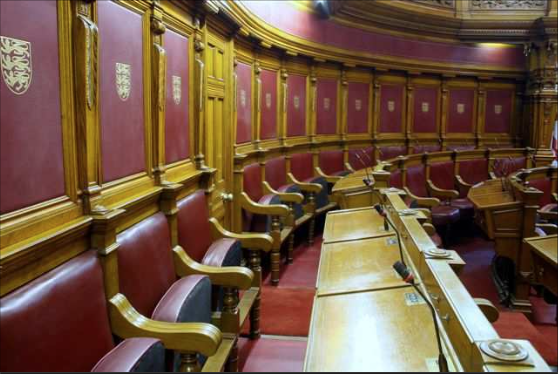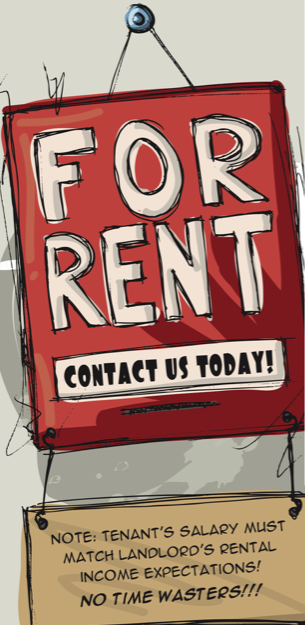

Over 5,200 islanders might be backing a petition to cap rental prices, but the secretive business guru known only as 'The Fool' has other ideas, arguing the move could have unintended consequences.
In his latest column for Connect magazine, he got to explain how demand and supply works... in pictures...
"Here is a picture. It is neither original, creative, nor is it particularly well drawn. It is, however, one of the most important pictures that exists to show how our world actually works.

The line marked ‘Demand’ shows that people will demand more of a product, the cheaper the product gets.
The line marked ‘Supply’ shows that producers are willing to supply more of a product the more expensive the product gets. That’s it. Pure, simple; elegant, even.
Here’s another picture. It looks a bit like the first one, but if the first was Monet’s dark period, this is more ‘yellow period’ stuff:

The blue dot marks the point where amount demanded, and amount producers are willing to supply intersect, and this we call the equilibrium (market) price.
The delicate pink shaded area shows the demand that isn’t being met (i.e. everybody who would like to buy the product, but are unwilling or unable to pay the market price).
Finally, we get to our blue period, when the art gets a little more opaque; but the narrative, if anything, gets more compelling.

If the price that suppliers are able to receive for their product is artificially reduced (let’s say by, I don’t know, a well-intentioned but ultimately inept government), then what happens?
Our third picture shows that not only do suppliers reduce the amount of product that they are willing to supply at that lower price, but that the unmet demand gets larger (despite the price falling, people can’t buy what suppliers are unwilling to supply).
So what’s the reason for all of this patronising nonsense? The States, in response to an online petition, are set to debate a move to make rents cheaper for people. Nothing wrong with that; democracy and all.

Pictured: 'The Fool' doesn't think the States should introduce rental caps.
However, the proposed method of achieving this would be to restrict the rent somebody can be charged to 30% of that person’s income, a form of voodoo economics sufficient to make Ronnie Regan turn in his grave.
Where to start? The preceding charts show the ultimate effect upon the supply of something in response to a forced reduction in price. It’s a little difficult to see how getting landlords to accept a lower rent for their properties than they are already receiving would serve as an incentive to them making more property available for rent.
Secondly, who do we imagine will be the target tenants for landlords should the new 30% of income rule come in? Will it be those earning high salaries, or those whom the measures are actually designed to help: those with lower incomes?

Pictured: The Fool argues that caps on rental prices could have unintended consequences.
Thirdly, one has to question why it is that landlords are presently able to charge the rents they do? On the basis that nobody would want their property to stand empty whilst they sought a rent that was unachievable, it is obvious that the market has found its equilibrium level.
The shortage of available rental properties means that prices obviously reflect where demand is meeting supply, even if to a certain percentage of the population, that price seems excessive.
Finally, could we seriously consider a system that completely ignored the cost to a landlord of providing a rental property, instead basing the rent they received on a tenant’s ability to pay? How much incentive is there to provide rental space when rising costs are completely divorced from income?

Pictured: The petition was signed by over 5,000 islanders.
The most ridiculous implication of this proposal, however, because we would be basing rental costs on ability to pay, not on the cost of providing the property, is that everybody should be entitled to rent the same property, irrespective of the price they paid. Would the people proposing this change also apply the same pricing system for bread, or cars, or electricity, or any other expense we incur in our everyday lives, because that’s an economic system which hasn’t worked out so well for people in the past, Comrade.
State attempts to interfere in the market’s pricing mechanism rarely result in fairness, and usually end up hurting those whom the measures were designed to assist.
Let’s hope for everybody’s sake that this is a short debate."
The views expressed in this piece are those of the author, and not of Bailiwick Express.
Read the Fool and more analysis in Connect Magazine by clicking here.
Comments
Comments on this story express the views of the commentator only, not Bailiwick Publishing. We are unable to guarantee the accuracy of any of those comments.